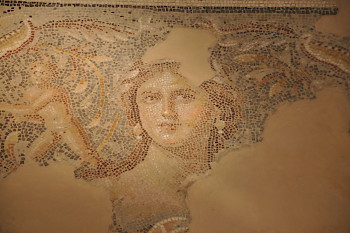Yehuda ha-Nasi
Yehuda ha-Nasi (c. 200 CE): rabbi, collector of rabbinical traditions, author of the Mishnah.

After the fall of Jerusalem, in 70 CE, Jewish life had no temple and no high priest any more. Judaism had to reinvent itself. There were several painful developments, such as the parting of ways: those who stressed Messianism became Christians, those who stressed the study of the Law founded rabbinical Judaism. One key figure was Yohanan ben Zakkai, who founded a school in Javneh and renewed Pharisaism.
In the course of the second century, the canon of the Jewish Bible was established, the training of rabbis was organized, and the old Pharisaic traditions, which had been handed down orally, were written down. One remarkable aspect is that they written in Hebrew, while most Jews spoke Greek or Aramaic.
The first collection of rabbinical wisdom that survives is the Mishnah ("repetition"), which was created in c.200 CE by rabbi Yehuda ha-Nasi of Sepphoris. It consists of sixty-three tractates, containing the opinions of the rabbinical sages.
Although certain topics are not discussed (e.g., Messianism), and several topics are obviously hypothetical (e.g., the tractate Middot on rebuilding the Temple), one gets the impression that Yehuda tried to cover every aspect of human life, showing that God is everywhere, Judaism is always possible, and that God had - as was written in the first chapter of the Bible - created a world that was good.
Essentially, Yehuda showed a way of coping with the fact that the land of Israel was no longer Jewish. In doing so, he renewed Judaism. It is perhaps no coincidence that his nickname Nasi, "prince", is a Messianic title.